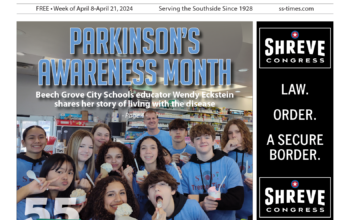Topics is a course at Southport High School, taught by Kevin Sanders, which analyzes major events from United States and world history through Hollywood films that attempt to portray those events. Students investigate historical documents and other sources to determine if a film is historically accurate.
The goal is for students to develop deeper understandings of the historical discipline while generating questions about the way the world is around them, along with watching classical films that have graced American and international screens. This week, Thian Awi reviews the film The Grapes of Wrath.
By Thian Awi
The Grapes of Wrath is a movie from 1940 that perfectly highlights how evil capitalism can be. The movie follows the Joad family as they move west after they get kicked out of their farm by the owners during the Great Depression. The Joad family is a good example of what happens to lower class people because of capitalism, where the rich get richer and are in a position to exploit the poor.
The journey to California is especially hard because of the limited amount of money the family has. At one point, Pa Joad enters a restaurant to buy bread for Grandma. In the scene, we see that the male restaurant owner realizes their hardship and tells the cashier/waitress to give Pa the bread for free. Then, when the little girls enter the store, the cashier tells them that the candies are a penny for two, even though the actual price is actually a nickel. So, the family ends up paying less for everything. This scene is very touching because it shows how Americans were helping each other during hard times even when the government and the rich people didn’t. Throughout the movie, the Joads do not receive help from the rich, only the people who are also at the bottom. The flawed economic system of capitalism is shown by how greedy the rich are, not caring whether people go homeless and starving as long as they have their money.
When the family arrives at the migrant campground for workers, they realize that the place is filled with other starving, jobless people who are desperate. Another scene that shows the downside of capitalism is when a contractor tried to hire men for 30 cents to pick fruits. When the contractor refuses to write up a guarantee, it seems pretty clear that he doesn’t want to pay them as much as they deserve. This scene is a telling because it shows that even when they see people starving and at the bottom, instead of helping them, they still want to misuse the poor. Capitalism is great for the rich and people who can get a head start, however, for the poor, it’s harder to make it. With the government not helping them and the rich exploiting them, how can the poor people make ends meet and have enough food on the table? They can’t.
This movie also shows the way the poor had to live through the Depression accurately. The Library of Congress shows the pictures of the Dust Bowl migration, which was a direct result of poverty and having no source of income. Although the movie shows a fictional family, many families were actually affected by the same circumstances. Many people were left to rely on family and friends who had more money while others were forced to move west in search for work.


